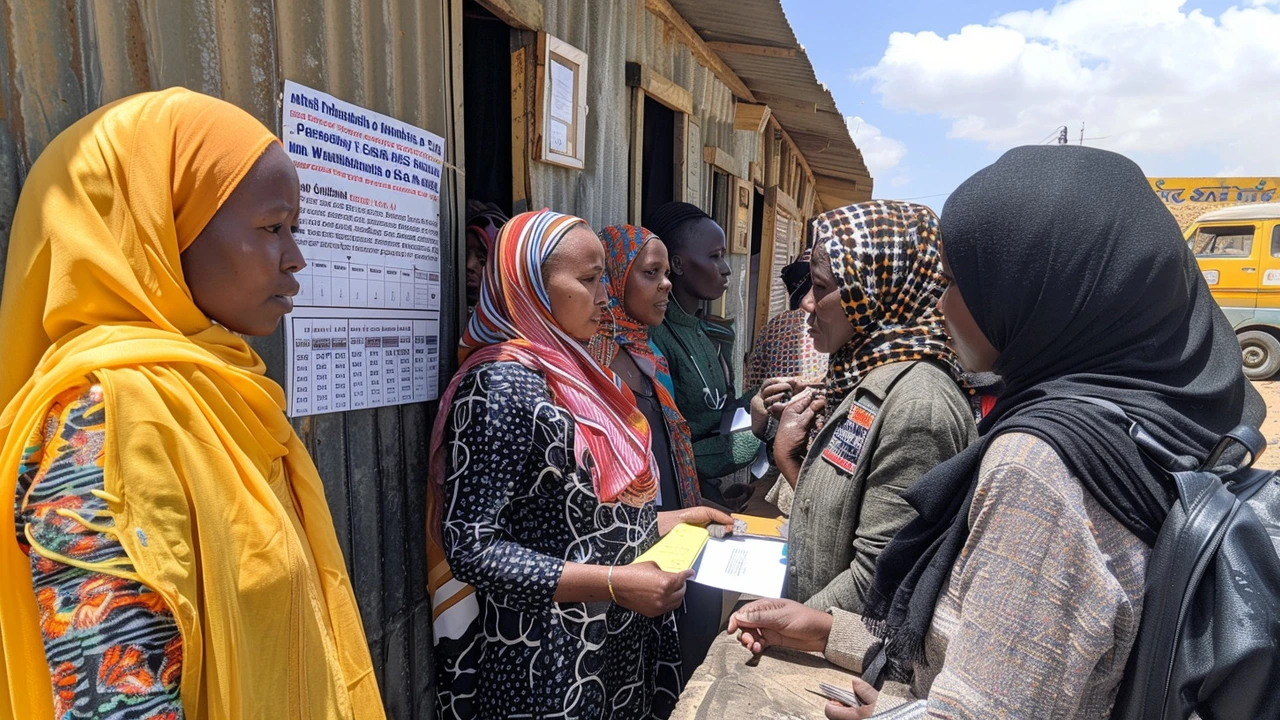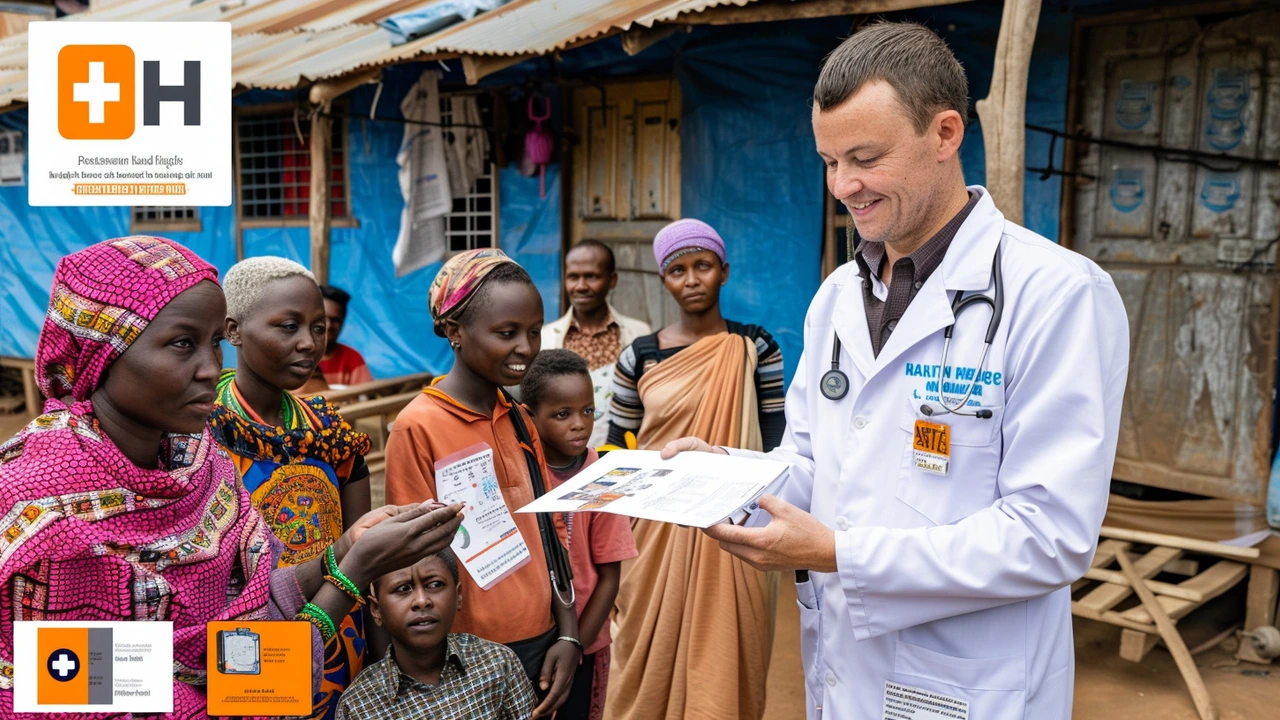Understanding the leading causes of death in Ethiopia is crucial, not only for health professionals but for anyone interested in global health trends. Ethiopia, with its diverse landscapes and cultures, faces unique healthcare challenges.
The following discussion delves into the most common causes of death in Ethiopia, backed by the latest statistics and research. We'll also explore the various factors contributing to these health issues and discuss strategies that could reduce mortality rates.
- Understanding Health Issues in Ethiopia
- Leading Causes of Death: Statistics and Facts
- Contributing Factors and Challenges
- Prevention and Health Strategies
Understanding Health Issues in Ethiopia
Ethiopia, a country known for its rich culture and historic legacy, grapples with numerous health challenges. The nation has made significant progress over the past decades, yet many of its citizens still face serious health concerns. The healthcare system, although improving, is stretched thin and often struggles to meet the needs of its large and diverse population.
One major issue in Ethiopia is the prevalence of infectious diseases. Diseases like malaria, tuberculosis, and HIV/AIDS continue to impact a significant portion of the population. Malaria is particularly rampant in the lowland areas, posing a serious threat to public health. Despite extensive efforts to combat it, many rural communities lack sufficient resources for effective prevention and treatment. Another pressing concern is the rise of non-communicable diseases (NCDs). As more people in Ethiopia shift towards urban living and adopt Westernized lifestyles, the incidence of conditions such as heart disease, diabetes, and hypertension is increasing. These diseases, often associated with lifestyle choices, are becoming major contributors to mortality rates.
Children and mothers are particularly vulnerable in Ethiopia. Maternal and child health remains a priority, yet many still suffer from malnutrition and lack of access to essential healthcare services. According to the World Health Organization, the maternal mortality ratio is significantly high, which underscores the urgent need for improved health services for women during pregnancy and childbirth.
The World Bank notes, "While there have been improvements in maternal health services, gaps in access to skilled care during childbirth still exist, particularly in rural areas."
Another challenge is the healthcare infrastructure itself. Despite considerable efforts to build new facilities and train healthcare workers, there are still many areas where services are inadequate. Many Ethiopians live in remote, underserved regions where access to even basic healthcare can be a long and difficult journey. Healthcare spending is relatively low, which impacts the availability of medical supplies and affects the quality of care. The country also faces a significant shortage of healthcare professionals. Doctors and nurses are often concentrated in urban areas, leaving rural communities underserved. This urban-rural divide exacerbates health inequities across the population.
Ethiopia's health issues are further complicated by socio-economic factors. Poverty, low literacy rates, and poor sanitation are interlinked with health outcomes. Many families cannot afford healthcare costs, and traditional beliefs sometimes discourage the use of modern medical practices. Improving education and socio-economic conditions are essential for making lasting improvements in public health. The effects of climate change are also increasingly affecting health in Ethiopia. Changes in climate patterns can lead to increased prevalence of waterborne diseases and can impact food security, leading to malnutrition. Ensuring environmental sustainability is therefore another important aspect of addressing health challenges in the country.
Tackling these health issues requires a multifaceted approach. Investment in healthcare infrastructure, education, and socio-economic development is crucial. Strengthening partnerships with international organizations and implementing effective health policies can also play a pivotal role in improving the health outcomes for the people of Ethiopia.

Leading Causes of Death: Statistics and Facts
Understanding the leading causes of death in Ethiopia requires an in-depth look at both the statistics and the contributing factors. According to recent data, infectious diseases remain a significant issue in the country. One of the most prevalent is HIV/AIDS, which has had a profound impact on the population. Although considerable progress has been made in reducing the infection rate, the disease still claims many lives each year.
Respiratory infections, including tuberculosis and pneumonia, are other leading causes of death. These diseases are often exacerbated by poor living conditions and limited access to healthcare. Tuberculosis, in particular, is prevalent in rural areas where healthcare infrastructure is less developed.
Non-communicable diseases are also becoming more common in Ethiopia. Cardiovascular diseases and diabetes are on the rise, partly due to changes in lifestyle and diet. The shift from traditional diets to more Westernized eating habits has contributed to an increase in obesity and associated diseases.
Malnutrition continues to be a critical issue, particularly among children. According to UNICEF, more than one-third of Ethiopian children are stunted due to chronic malnutrition. This not only affects their growth and development but also increases their susceptibility to other diseases.
A report by the World Health Organization highlights road traffic accidents as a significant cause of death, particularly among young adults. The rapid urbanization and increase in motor vehicles without a corresponding improvement in road safety measures have led to a rise in fatalities from traffic accidents.
"Ethiopia's health challenges are multifaceted and require a comprehensive approach to address both infectious and non-communicable diseases," says Dr. Kebede Worku, former State Minister of Health.
Another concerning issue is the high maternal mortality rate. Many women do not have access to proper prenatal and postnatal care, leading to complications during childbirth. This is particularly prevalent in rural areas, where healthcare facilities are sparse.
Statistical Overview
| Cause | Percentage of Total Deaths |
|---|---|
| HIV/AIDS | 14% |
| Respiratory Infections | 13% |
| Cardiovascular Diseases | 12% |
| Diabetes | 8% |
| Malnutrition | 7% |
| Traffic Accidents | 6% |
| Maternal Mortality | 5% |
Addressing these health issues requires a multi-faceted approach that includes improving access to healthcare, enhancing public health education, and implementing effective disease prevention programs. Only through coordinated efforts can Ethiopia hope to reduce its mortality rates and enhance the well-being of its population.

Contributing Factors and Challenges
When we delve into the causes of mortality in Ethiopia, it's essential to understand the varied factors contributing to these health issues. One of the most prominent factors is poverty. Ethiopia is among the poorest countries globally, with many of its citizens living below the poverty line. This economic reality affects all aspects of life, including healthcare access, nutrition, and living conditions.
Malnutrition is a significant issue linked to poverty. Many Ethiopians, especially children, do not receive adequate nutrition, which can weaken the immune system and make them more susceptible to diseases. Food insecurity remains a chronic problem in various regions, further complicating efforts to address health concerns.
Another contributing factor is the lack of healthcare infrastructure. Many rural areas in Ethiopia have limited access to medical facilities, and those available are often under-resourced. The shortage of healthcare professionals also exacerbates this problem. In urban areas, while healthcare services might be more available, they can be expensive and out of reach for many people living in poverty.
The World Health Organization highlights that "increasing access to healthcare services in remote areas is critical for improving health outcomes."
Infectious diseases like malaria, tuberculosis, and HIV/AIDS are prevalent in Ethiopia and remain leading causes of death. The transmission of these diseases is facilitated by a lack of awareness, inadequate healthcare services, and limited access to preventive measures such as mosquito nets and antiretroviral drugs.
Water and sanitation are also crucial factors. Many communities in Ethiopia do not have access to clean water and proper sanitation, leading to the spread of waterborne diseases such as cholera and dysentery. These diseases are especially deadly for children and can lead to severe outbreaks in vulnerable areas.
Environmental issues play a part too. Ethiopia's climate is changing, with increased instances of droughts and floods. These climatic changes can have devastating effects on agriculture, leading to food shortages and further entrenching poverty. They also create optimal conditions for the breeding of disease vectors like mosquitoes.
Education, or the lack thereof, also plays a role in the health challenges faced by Ethiopians. Limited educational opportunities mean that many people are not informed about basic health practices and disease prevention. This lack of knowledge hinders efforts to control outbreaks and improve community health.
Lastly, political and social instability can have a substantial impact on health outcomes. Conflict can disrupt healthcare services, displace populations, and create environments where diseases can spread more easily. The combination of these factors creates a complex web of challenges that are difficult to address with a single approach.
Addressing these contributing factors and challenges requires a multifaceted strategy. Improving economic conditions, investing in healthcare infrastructure, enhancing access to education, and tackling environmental issues are all critical steps toward reducing mortality rates in Ethiopia.

Prevention and Health Strategies
To tackle the leading causes of death in Ethiopia, which include infectious diseases, malnutrition, and non-communicable diseases, a multi-faceted approach is essential. Among the most effective strategies is improving access to healthcare. Many Ethiopians live in rural areas where medical facilities are scarce. Therefore, expanding healthcare infrastructure and improving transportation options to these centers can be life-saving.
Vaccination programs hold a key role in curbing diseases such as measles, tuberculosis, and hepatitis. Immunization campaigns, often led by global health organizations, have shown remarkable success in reducing disease prevalence. For example, the World Health Organization's Expanded Programme on Immunization has been vital in this regard. According to the WHO, vaccination coverage in children under one year old increased to over 90% in 2023, a significant improvement from previous years.
"Improving vaccine access and outreach programs is crucial in mitigating the health crisis in Ethiopia," says Dr. Tedros Adhanom Ghebreyesus, Director-General of WHO.
Nutrition and Health Education
Another significant aspect is nutrition. Malnutrition remains a pressing problem, especially among children and pregnant women. Initiatives to provide nutritional supplements and fortified foods can greatly impact public health. Programs aimed at educating communities about proper nutrition and hygiene also play a vital role. Simple actions such as handwashing, safe food preparation, and clean water access can prevent numerous illnesses. By educating people on these practices, the risk of diarrhea and respiratory infections, which are major causes of childhood mortality, can be greatly reduced.
Non-Communicable Diseases (NCDs)
The rise in non-communicable diseases such as diabetes and heart disease requires a proactive approach. Lifestyle changes, including diet and exercise, are vital. Community health programs focusing on physical activities and healthy eating can help. Furthermore, early detection and treatment are crucial. Regular health check-ups and screenings for conditions like hypertension and diabetes can lead to early intervention, significantly reducing death rates from these diseases. Facilities for treating these conditions must be made available and affordable to the masses.
Policy and Government Role
Government policy plays a critical role in healthcare delivery and health improvement. Allocating sufficient funding to healthcare and ensuring effective utilization of those resources is essential. Policies that promote public health, such as anti-tobacco campaigns and regulations on food industries to reduce harmful ingredients, can also contribute significantly. Collaboration with international organizations can bring in additional expertise and resources. For instance, partnerships with entities like UNICEF and the World Bank have been instrumental in implementing wide-reaching health initiatives in Ethiopia.
In summary, the fight against the leading causes of death in Ethiopia requires a comprehensive approach, encompassing healthcare access, vaccination, nutrition, education, and government support. By addressing these areas, it is possible to make substantial strides in improving the health and longevity of the Ethiopian population.

 Understanding Cultural Etiquette: Respecting Traditions in Ethiopia
Understanding Cultural Etiquette: Respecting Traditions in Ethiopia
 Understanding Wealth in Ethiopia: An Insight into Salaries and Economic Status
Understanding Wealth in Ethiopia: An Insight into Salaries and Economic Status
 Pharmacist Salary in the USA: What You Need to Know
Pharmacist Salary in the USA: What You Need to Know
 Understanding Maximum Overtime Hours in Ethiopia: A Comprehensive Guide
Understanding Maximum Overtime Hours in Ethiopia: A Comprehensive Guide
 Exploring Ethiopia's Booming Industries: Key Sectors Driving Growth
Exploring Ethiopia's Booming Industries: Key Sectors Driving Growth
Crystal Novotny
May 23, 2024 AT 20:46Numbers can be comforting but they mask the deeper moral failings that drive disease and death in Ethiopia.
Reagan Traphagen
May 23, 2024 AT 22:10The data you cite is cherry‑picked propaganda engineered by global elites to keep Ethiopia in a perpetual state of aid dependence while they profit from our suffering.
mark sweeney
May 23, 2024 AT 23:33When we look at the mortality figures the first thing that jumps out is how little the reports care about the lived reality of the people. They throw percentages at us like confetti without mentioning the tthe daily grind of walking miles for clean water. The lack of clinics in remote valleys means a simple fever can turn fatal before anyone even hears the cry. And yet the policy papers stay glued to the idea that building a single hospital in the capital will solve everything. That is a naive fantasy that ignores the fact that most Ethiopians still live off the land and cannot afford transportation costs. Malnutrition is not just a statistic; it is a silent killer that weakens immune systems and makes kids vulnerable to malaria and TB. We also see a disturbing rise in heart disease and diabetes as the younger generation adopts fast‑food diets that are imported and cheap. The government tries to push vaccination drives, but without reliable cold‑chain logistics the doses spoil before they reach the villages. Corruption at multiple levels siphons off resources that were meant for these very programs. International NGOs brag about their achievements, yet they often operate in bubbles and miss the cultural nuances that determine health behavior. Education is a huge missing piece; without basic health literacy many families cannot recognize danger signs early. Climate change is already altering malaria patterns, bringing the disease to higher altitudes previously thought safe. Road safety is another ignored factor, as more motorcycles zip through towns causing accidents that claim young lives. If we want real progress we must invest in decentralized health posts, train community health workers, and empower local leaders. Only then can we turn the bleak numbers into a story of hope rather than a perpetual cycle of despair.
randy mcgrath
May 24, 2024 AT 00:56I hear your frustration and agree that decentralizing care is crucial. Community health agents can bridge the gap where hospitals cannot reach. Simple training and supplies often make the biggest difference. Let’s keep pushing for policies that value local solutions.
Frankie Mobley
May 24, 2024 AT 02:20Investing in clean water sources can dramatically cut mortality rates.